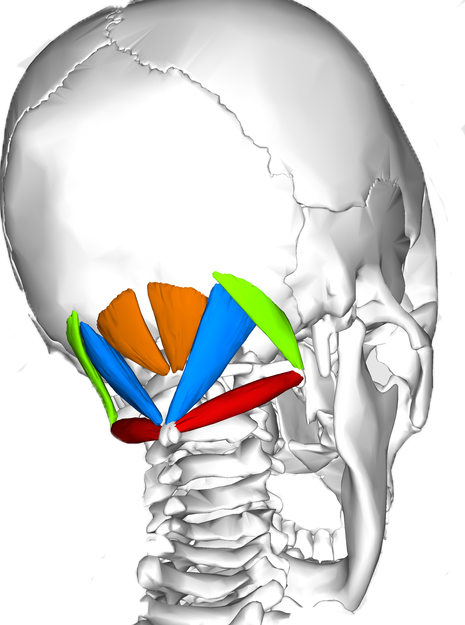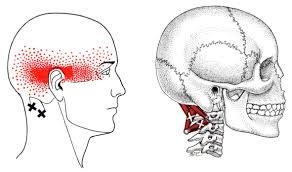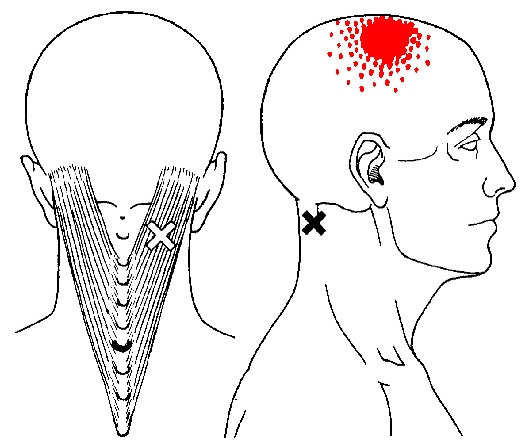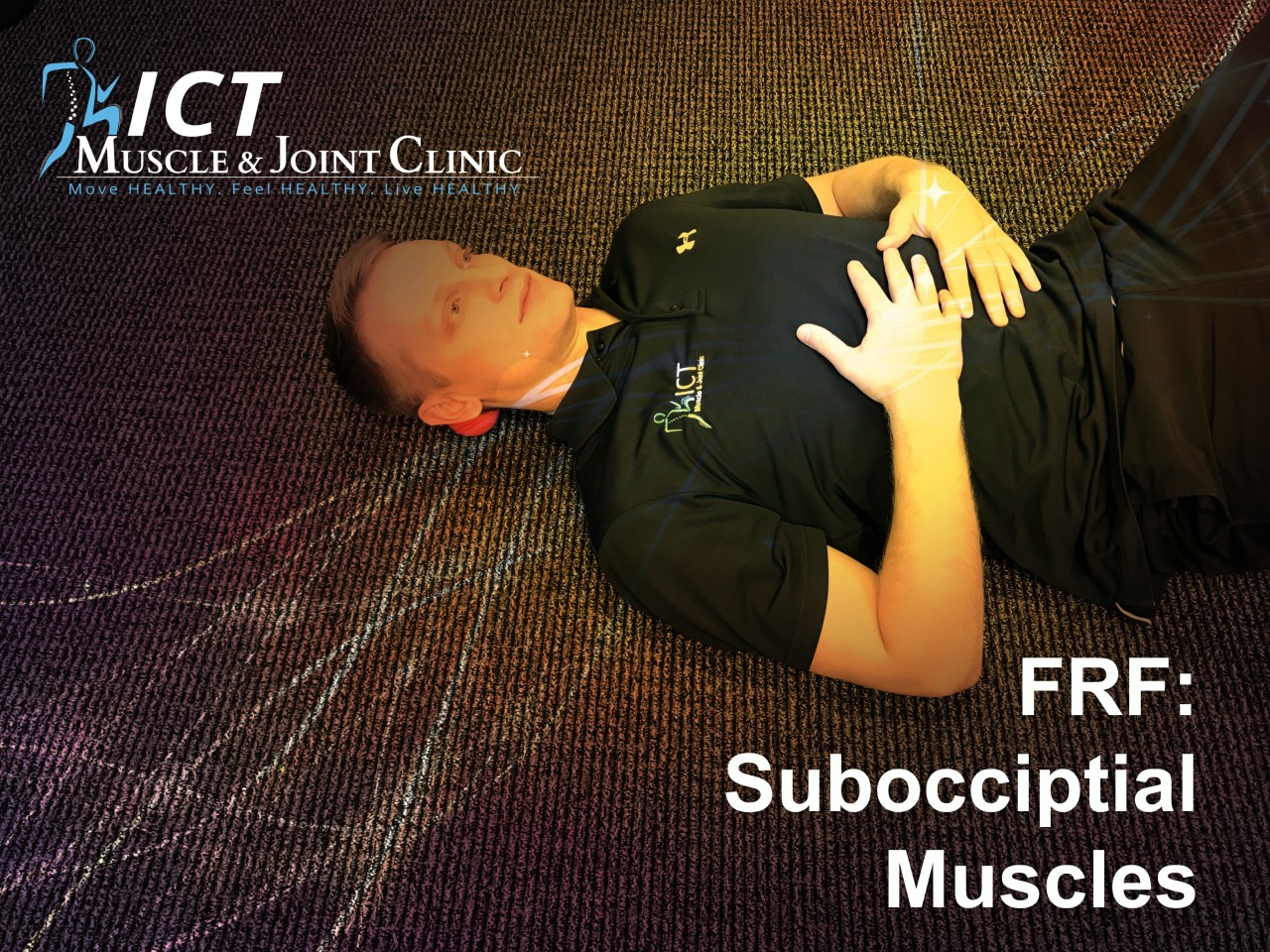Foam Rolling: Suboccipital Muscles
The Functional Anatomy

The suboccipitals are a group of muscles functioning to generate motion and to stabilize the skull on the first two cervical vertebra of the spine. Collectively, this group includes a pair of each: inferior capitus oblique (red), superior capitus oblique (green), rectus capitus posterior major (blue) and rectus capitus posterior minor muscles (orange).
Like all myofascial units, when this group of muscles become overused, they can produce pain. Typically, pain associated with the suboccipital muscles produces a band-like pain that travels from the base of the skull, wraps around the side of the head, and rests behind the eye. This band-like distribution can commonly mimic pain associated with a migraine. However, there are several muscles that attach along the base of the skull at the superior nuchal line. This line is a bony ridge for muscular and fascial attachments.
When foam rolling this area, understand you are not merely foam rolling the suboccipital muscles; you are working on releasing the collective tension of all myofascial units that converge within this area (i.e. trapezius, splenius capitus, etc).
Foam rolling the suboccipital muscles can be a little tricky when using a foam roller. I find it best results when utilizing a lacrosse ball; it is better shaped toget into trickier areas between the spine and the mastoid processes. The mastoid process is the bone you can feel directly behind the ear.
The Why
Headaches and associated migraines occur roughly in 80% of the population, in any given year. For many, this affects not only daily life, but also work performance. Foam rolling the suboccipital muscles can help decrease tension headaches and potentially help reduce the frequency and intensity of a migraine episode. Keeping a small lacrosse ball in the work desk cannot only help improve your work output, but also your social, and family life.
The distributions of pain for the suboccipital muscles are seen below to the left. Because the proximity and depth is close enough, while rolling the suboccipital muscles other tissue such as the semispinalis capitus will also be targeted, as seen on the right. If you are feeling tension, pain, and headaches within the red highlighted area, then try foam rolling the upper cervical spine and base of the skull with a lacrosse ball. To get out of pain and stay out of pain is why you should foam roll this area!


About the author
Dr. Keith Sparks is an award-winning chiropractor, functional medicine expert, and the co-founder of ICT Muscle & Joint Clinic. Dr. Sparks’ emphasis of care originated within the fields of rehabilitation, soft-tissue therapies, and chiropractic. To date, he has brought this unique combination of skills into union with functional medicine. The sole purpose of intertwining these distinct skills, knowledge, and services is to provide incomparable care to his local community. Dr. Keith Sparks is often seen in the Wichita, KS community speaking at business events and teaching health and performance classes.
